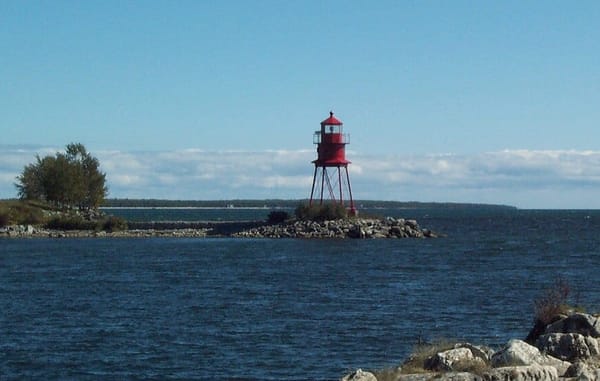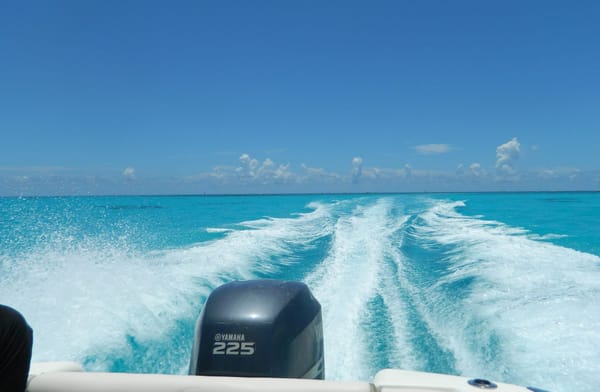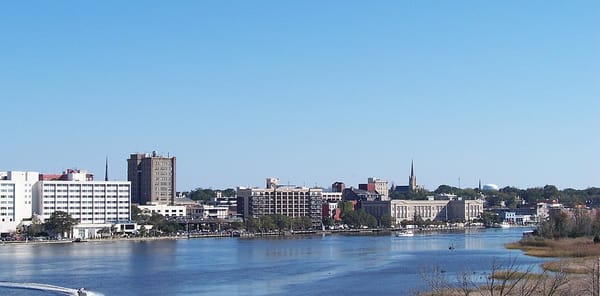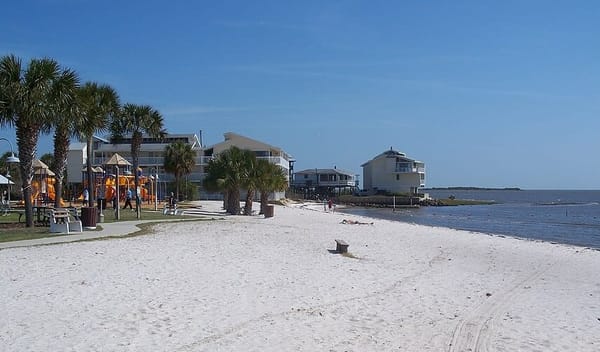Coastal Sites: 8 Lighthouses in Alaska
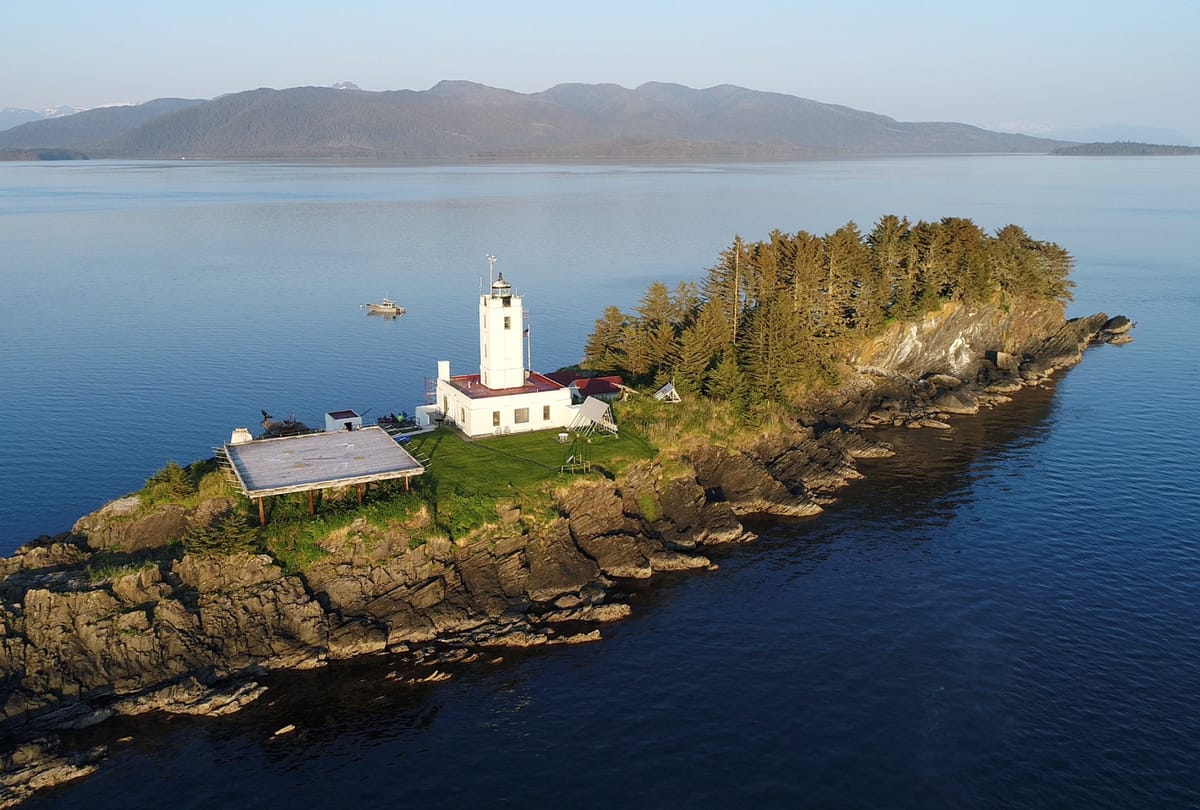
For a unique glimpse into Alaska’s maritime heritage, a visit to some of its lighthouses is a must-do for boaters and travelers. Whether accessed by boat, plane or hiking trails, they provide stunning views, historical insights and a connection to the past. Some lighthouses even offer overnight accommodations, allowing visitors to experience the life of a lighthouse keeper firsthand.
Alaska’s lighthouses are scattered along the rugged coastlines and serve as vital navigational aids in a region known for its treacherous waters, gorgeous glaciers and unpredictable weather conditions. Here’s an overview of some notable Alaskan lighthouses to visit from private boat dock rentals and marinas around the Last Frontier.
Cape Decision Lighthouse

Located on the southern tip of Kuiu Island in Southeast Alaska, Cape Decision Lighthouse was built in 1932 to aid vessels navigating the perilous waters of Chatham Strait and Sumner Strait. The lighthouse is still operational today and managed by the Cape Decision Lighthouse Society, which has undertaken restoration projects to preserve its historical significance.
Eldred Rock Lighthouse
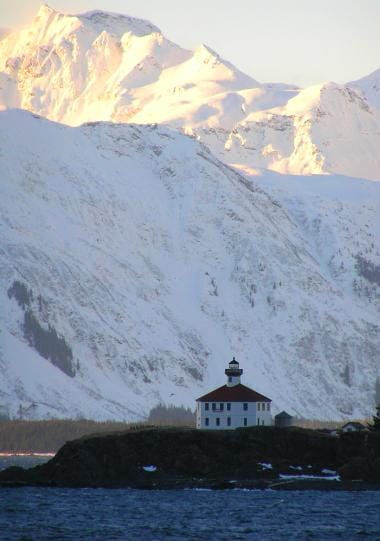
Eldred Rock Lighthouse is located along the Lynn Canal in Southeast Alaska, about 50 miles north of Juneau. It was built in 1905 and is one of the oldest remaining lighthouses in Alaska. This octagonal wooden lighthouse was established to improve safety for vessels traveling to the Klondike's gold fields. Its picturesque appearance and historical value make it a popular subject for photographers, historians and boaters who visit from marinas and private boat slips for rent.
Five Finger Islands Lighthouse
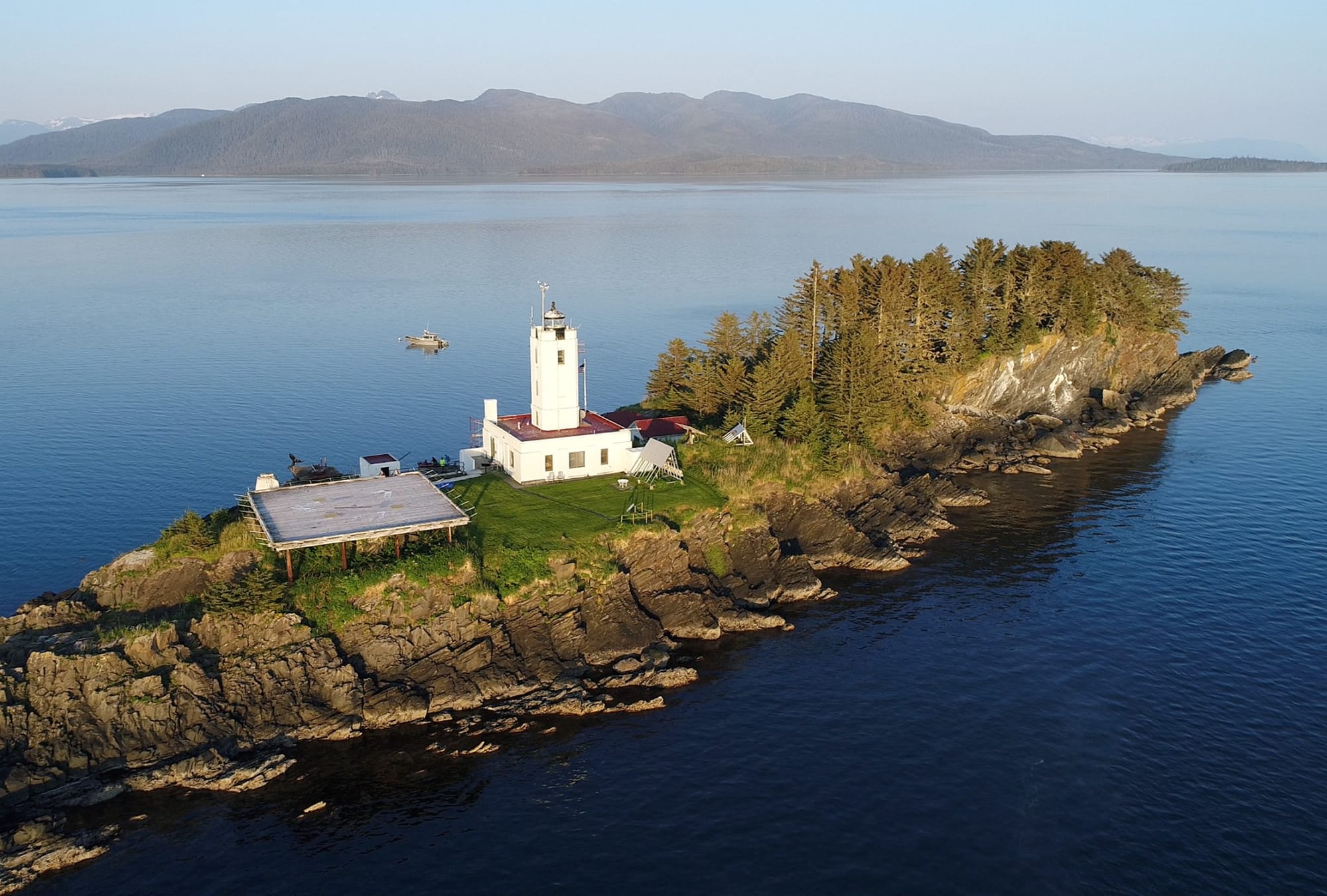
Five Finger Islands Lighthouse, located in Stephens Passage in Southeast Alaska, was built in 1902. It’s named for the five small islands in the area and marks a critical point for vessels navigating the Inside Passage. It was the first lighthouse constructed in Alaska and is now part of a restoration and preservation effort led by a non-profit organization.
Cape St. Elias Lighthouse
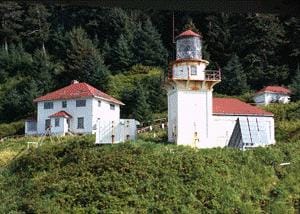
Built in 1916, Cape St. Elias Lighthouse is located on the uninhabited Kayak Island in the Gulf of Alaska. It’s on the western side of the island and was crucial for guiding vessels through the Gulf of Alaska. The remote and often harsh environment posed significant challenges for its keepers, making its history one of resilience and determination. This National Historic Landmark is approximately 62 miles southeast of Cordova.
Sentinel Island Lighthouse
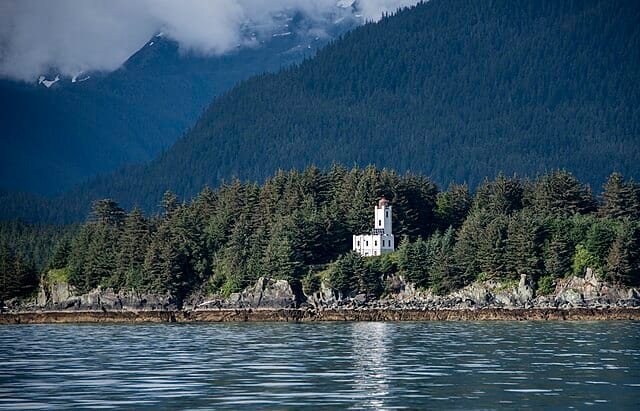
Situated in the Lynn Canal, near Juneau along the Inside Passage, Sentinel Island Lighthouse was built in 1902. Serving as a guide for vessels navigating between Juneau and Skagway, it's an example of early 20th-century architecture and maritime engineering. The Sentinel Island Lighthouse Association is preserving it.
Point Retreat Lighthouse
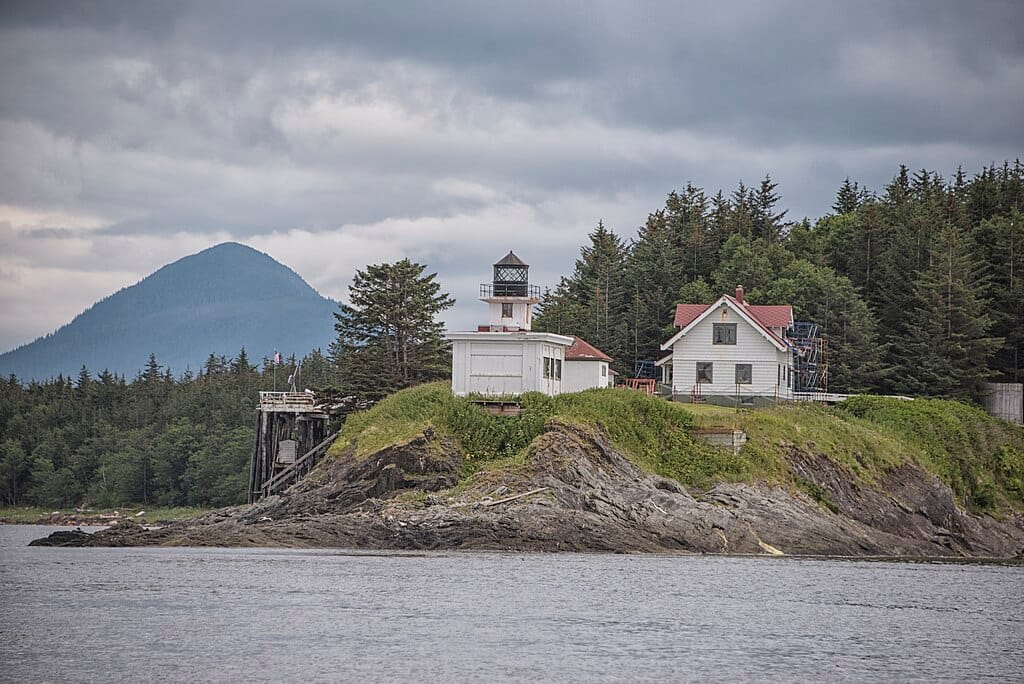
Point Retreat Lighthouse, located on Admiralty Island, is approximately 20 miles northwest of Juneau. Constructed in 1904, it aids in navigation through the Lynn Canal. The original structure was a wooden tower integrated into a keeper’s dwelling. In 1924, it was replaced with the current octagonal concrete tower, which stands 25 feet tall.
Though access to the lighthouse is primarily by seaplane or boat from private boat slip rentals, it remains a popular destination for those interested in maritime history and the natural beauty of Alaska.
The Point Retreat Lighthouse, listed on the National Register of Historic Places, is notable for its distinctive architectural style. The concrete tower is capped with a traditional lantern room and has a classic white and red color scheme. The light itself sits 52 feet above sea level, providing a crucial navigational aid to mariners.
Cape Sarichef Lighthouse
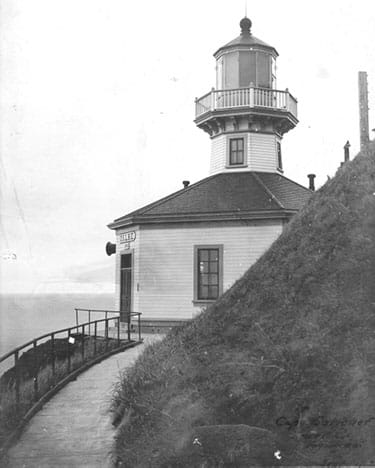
The Cape Sarichef Lighthouse is located on Unimak Island, about 630 miles southwest of Anchorage in the Aleutian Islands. It has a rich history and plays a crucial role in ensuring the safety of vessels navigating the treacherous waters of the Bering Sea and the North Pacific Ocean.
The original lighthouse was established in 1904, recognizing the need for navigational aid in this remote and hazardous region. Its strategic location on the eastern tip of Unimak Island, the largest and easternmost of the Aleutian chain, was chosen.
The current structure, built in 1950, is a white concrete cylindrical tower with a height of 43 feet. This design replaced the original wooden tower, which had deteriorated over the years. The lighthouse is equipped with a powerful Fresnel lens that casts its light up to 18 nautical miles away, guiding ships safely through the perilous waters.
Cape Hinchinbrook Lighthouse

On the southern end of Hinchinbrook Island, near Prince William Sound, Cape Hinchinbrook Lighthouse was originally built in 1910. The first structure was a wood-frame building with a lens lantern. Due to the harsh weather conditions, it was replaced by a more durable concrete building in 1934. During WWII, the lighthouse played a crucial role in the defense system, helping to navigate military and supply ships.
Like many lighthouses, Cape Hinchinbrook was automated in the 1970s. This transition meant the end of the traditional lighthouse keeper's role, relying instead on technology to maintain the light.
